-
 Bitcoin
Bitcoin $76,444.7530
-3.77% -
 Ethereum
Ethereum $1,473.8355
-5.46% -
 Tether USDt
Tether USDt $0.9991
-0.08% -
 XRP
XRP $1.7965
-5.51% -
 BNB
BNB $553.4919
-0.36% -
 USDC
USDC $0.9999
-0.02% -
 Solana
Solana $105.2981
-1.74% -
 TRON
TRON $0.2303
0.81% -
 Dogecoin
Dogecoin $0.1422
-4.62% -
 Cardano
Cardano $0.5587
-4.41% -
 UNUS SED LEO
UNUS SED LEO $8.9866
1.01% -
 Toncoin
Toncoin $2.9933
-4.74% -
 Chainlink
Chainlink $10.9113
-4.81% -
 Stellar
Stellar $0.2215
-4.76% -
 Avalanche
Avalanche $16.1163
-3.29% -
 Sui
Sui $1.9371
-3.89% -
 Shiba Inu
Shiba Inu $0.0...01065
-6.69% -
 Hedera
Hedera $0.1469
-3.29% -
 MANTRA
MANTRA $6.2058
-1.53% -
 Dai
Dai $1.0000
0.01% -
 Bitcoin Cash
Bitcoin Cash $269.3457
-2.08% -
 Polkadot
Polkadot $3.3773
-5.87% -
 Litecoin
Litecoin $69.2204
-2.50% -
 Ethena USDe
Ethena USDe $0.9986
-0.01% -
 Bitget Token
Bitget Token $4.0180
-3.25% -
 Pi
Pi $0.5649
-4.50% -
 Hyperliquid
Hyperliquid $11.1928
-2.80% -
 Monero
Monero $195.3885
-4.41% -
 OKB
OKB $50.9235
-0.59% -
 Uniswap
Uniswap $4.7688
-6.95%
How do I connect my Ledger to the Exodus wallet?
Connecting your Ledger to Exodus enhances security and allows you to manage Bitcoin easily, with private keys safely stored on your Ledger device.
Apr 07, 2025 at 12:56 am
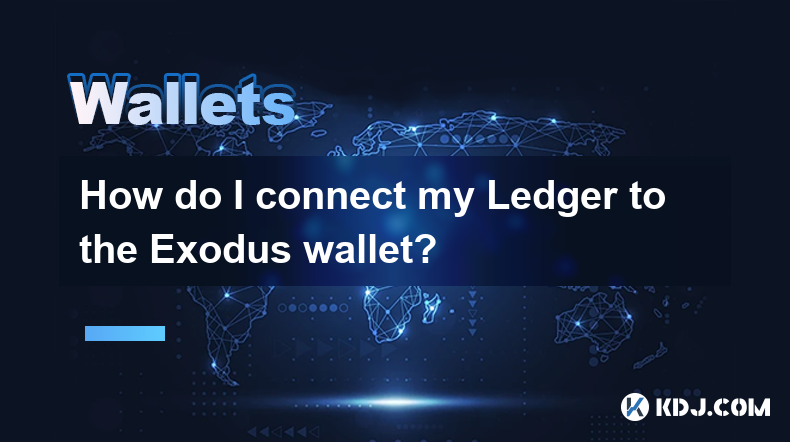
Connecting your Ledger hardware wallet to the Exodus software wallet is a straightforward process that enhances the security of your cryptocurrency holdings. By integrating these two platforms, you can enjoy the user-friendly interface of Exodus while benefiting from the robust security features of Ledger. This guide will walk you through the steps required to set up this connection, ensuring that you can manage your digital assets with ease and confidence.
To begin, you'll need to ensure that your Ledger device is properly set up and that you have the latest firmware installed. Additionally, you should have the Exodus wallet installed on your computer or mobile device. Once these prerequisites are met, you can proceed with the connection process.
Preparing Your Ledger Device
Before connecting your Ledger to Exodus, it's crucial to prepare your Ledger device. Here are the steps you should follow:
- Ensure your Ledger device is fully charged or connected to a power source.
- Update your Ledger device to the latest firmware. You can do this by connecting your Ledger to your computer, opening the Ledger Live application, and following the prompts to update the firmware.
- Set up a PIN code on your Ledger device if you haven't already done so. This adds an extra layer of security to your device.
- Initialize your Ledger device with a new set of recovery words or restore it using an existing set of recovery words. Make sure to store these recovery words in a safe and secure location.
Installing the Bitcoin App on Your Ledger
Exodus primarily supports Bitcoin, so you'll need to install the Bitcoin app on your Ledger device. Here's how to do it:
- Open the Ledger Live application on your computer.
- Navigate to the "Manager" tab within Ledger Live.
- Search for the Bitcoin app in the app catalog.
- Click on the "Install" button next to the Bitcoin app to install it on your Ledger device.
- Confirm the installation on your Ledger device by following the on-screen prompts.
Connecting Ledger to Exodus
Once your Ledger device is prepared and the Bitcoin app is installed, you can proceed to connect it to the Exodus wallet. Follow these steps:
- Open the Exodus wallet on your computer or mobile device.
- Click on the "Hardware Wallet" option in the left sidebar of the Exodus interface.
- Select "Connect a Hardware Wallet" from the dropdown menu.
- Choose "Ledger" as the hardware wallet you want to connect.
- Connect your Ledger device to your computer using a USB cable.
- Unlock your Ledger device by entering your PIN code.
- Open the Bitcoin app on your Ledger device.
- Click on the "Connect" button in the Exodus wallet to initiate the connection process.
- Follow the on-screen prompts in Exodus to complete the connection.
Verifying the Connection
After connecting your Ledger to Exodus, it's important to verify that the connection is successful. Here's how to do it:
- Check the Exodus wallet interface to ensure that your Ledger device is recognized and displayed as connected.
- Navigate to the "Portfolio" tab in Exodus to see if your Bitcoin balance from the Ledger device is displayed correctly.
- Attempt to send a small test transaction from Exodus to another wallet address to confirm that you can successfully initiate transactions using your Ledger device.
Managing Your Assets with Ledger and Exodus
Once your Ledger is successfully connected to Exodus, you can manage your cryptocurrency assets with ease. Here are some key features and functionalities you can utilize:
- View your Bitcoin balance directly within the Exodus wallet interface.
- Send and receive Bitcoin transactions using the user-friendly Exodus interface while maintaining the security of your private keys on your Ledger device.
- Monitor your transaction history and track the status of your Bitcoin transactions.
- Access additional features such as portfolio tracking, price charts, and market data within the Exodus wallet.
Troubleshooting Common Issues
While connecting your Ledger to Exodus is generally straightforward, you may encounter some common issues. Here are some troubleshooting tips:
- If your Ledger device is not recognized by Exodus, ensure that you have the latest firmware installed and that the Bitcoin app is open on your Ledger device.
- If you encounter errors during the connection process, try restarting both your Ledger device and the Exodus wallet application.
- If you are unable to send transactions, double-check that your Ledger device is unlocked and that the Bitcoin app is open.
Enhancing Security with Ledger and Exodus
By using your Ledger device with the Exodus wallet, you can enhance the security of your cryptocurrency holdings. Here are some key security benefits:
- Private key protection: Your private keys are stored securely on your Ledger device, reducing the risk of them being compromised by malware or hacking attempts.
- Two-factor authentication: The combination of your Ledger device and the Exodus wallet provides an additional layer of security, as you need physical access to your Ledger device to authorize transactions.
- Offline signing: Your Ledger device can sign transactions offline, further reducing the risk of your private keys being exposed to the internet.
Exploring Additional Features
While Exodus primarily supports Bitcoin when used with a Ledger device, you can still explore additional features and functionalities within the Exodus wallet. Here are some options to consider:
- Manage other cryptocurrencies: Although you can't connect other cryptocurrencies to your Ledger device through Exodus, you can still use Exodus to manage other assets separately.
- Utilize portfolio tracking: Exodus provides comprehensive portfolio tracking features, allowing you to monitor the performance of your entire cryptocurrency portfolio.
- Access staking and rewards: Depending on the cryptocurrencies you hold, you may be able to participate in staking and earn rewards directly within the Exodus wallet.
Common Questions and Answers
Q: Can I connect my Ledger to Exodus on a mobile device?
A: Yes, you can connect your Ledger to Exodus on both desktop and mobile devices. The process is similar, but you'll need to ensure that your mobile device supports USB OTG (On-The-Go) functionality to connect your Ledger device.
Q: Does connecting my Ledger to Exodus compromise the security of my private keys?
A: No, connecting your Ledger to Exodus does not compromise the security of your private keys. Your private keys remain securely stored on your Ledger device, and transactions are signed offline, ensuring that your keys are never exposed to the internet.
Q: Can I use my Ledger with Exodus to manage cryptocurrencies other than Bitcoin?
A: Currently, Exodus only supports connecting your Ledger device for Bitcoin. However, you can still use Exodus to manage other cryptocurrencies separately from your Ledger device.
Q: What should I do if I lose my Ledger device after connecting it to Exodus?
A: If you lose your Ledger device, you can use your recovery words to restore your Bitcoin wallet on a new Ledger device or another compatible hardware wallet. It's crucial to keep your recovery words safe and secure to ensure you can recover your funds in case of loss or theft.
Q: Can I disconnect my Ledger from Exodus and reconnect it later?
A: Yes, you can disconnect your Ledger from Exodus at any time and reconnect it later. Simply follow the same steps outlined in this guide to reconnect your Ledger device to Exodus whenever you need to access your Bitcoin holdings.
Disclaimer:info@kdj.com
The information provided is not trading advice. kdj.com does not assume any responsibility for any investments made based on the information provided in this article. Cryptocurrencies are highly volatile and it is highly recommended that you invest with caution after thorough research!
If you believe that the content used on this website infringes your copyright, please contact us immediately (info@kdj.com) and we will delete it promptly.
- "Cardano (ADA) Price Could Dip Below $0.60, Following Previous Market Cycle"
- 2025-04-09 05:10:12
- BONK, the well-known meme coin, has risen over 35% in the last week, attracting meme coin investors in the market. So, what caused this rally?
- 2025-04-09 05:10:12
- Bitcoin (BTC) Investors May Not Exactly Feel It, but BTC Has Been a Relatively Good Bet
- 2025-04-09 05:05:12
- Donald's Bitcoin (DONBTC) Could Turn Early Investors into Multi-Millionaires, Like Shiba Inu (SHIB) and Dogecoin (DOGE) Did
- 2025-04-09 05:05:12
- 6 Upcoming Kraken Listings That Could Be the Next Big Thing in Crypto
- 2025-04-09 05:00:13
- COTI Unveils New Privacy-Focused Blockchain to Reshape Web3 Transactions
- 2025-04-09 05:00:13
Related knowledge
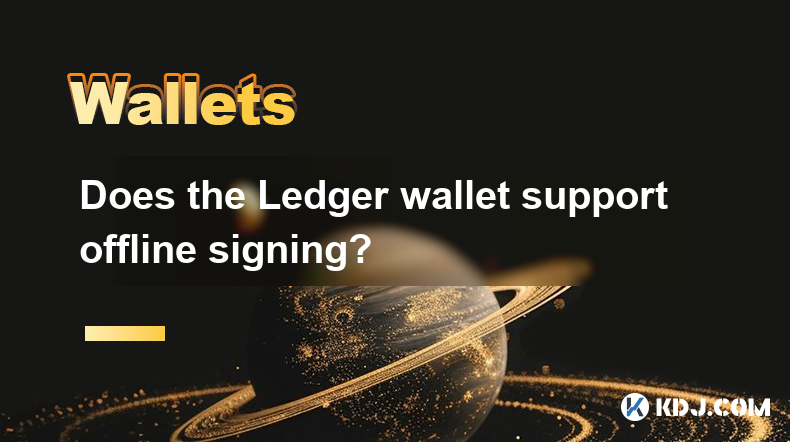
Does the Ledger wallet support offline signing?
Apr 09,2025 at 04:49am
Introduction to Ledger Wallet and Offline SigningThe Ledger wallet is a popular hardware wallet used by cryptocurrency enthusiasts to securely store their digital assets. One of the key features that users often inquire about is offline signing. Offline signing, also known as cold signing, is a security measure that allows users to sign transactions wit...

How do I send Ethereum to my Ledger wallet?
Apr 09,2025 at 03:21am
Sending Ethereum to your Ledger wallet involves a few straightforward steps, but it's crucial to follow them carefully to ensure the security of your funds. In this guide, we'll walk you through the process of transferring Ethereum to your Ledger wallet, ensuring that you understand each step and the necessary precautions. Preparing Your Ledger WalletBe...
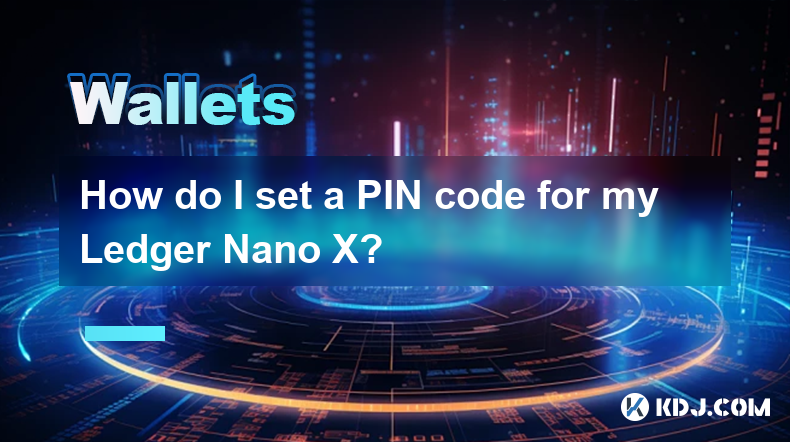
How do I set a PIN code for my Ledger Nano X?
Apr 08,2025 at 11:14pm
Setting a PIN code for your Ledger Nano X is a crucial step in securing your cryptocurrency assets. The PIN code acts as a primary layer of security, ensuring that only you can access your device. In this article, we will guide you through the process of setting up a PIN code on your Ledger Nano X, ensuring that you follow each step meticulously to main...
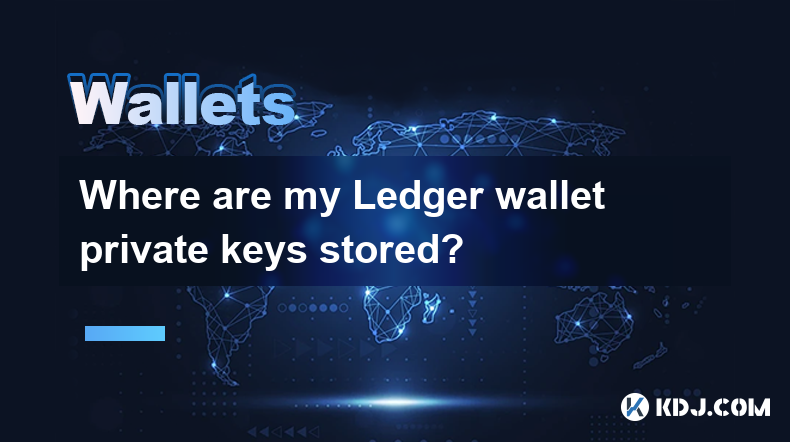
Where are my Ledger wallet private keys stored?
Apr 08,2025 at 10:35pm
When using a Ledger hardware wallet, one of the most critical aspects to understand is the storage and management of your private keys. This article will delve into the specifics of where your Ledger wallet private keys are stored, ensuring you have a comprehensive understanding of their security and accessibility. Understanding Private Keys in Ledger W...
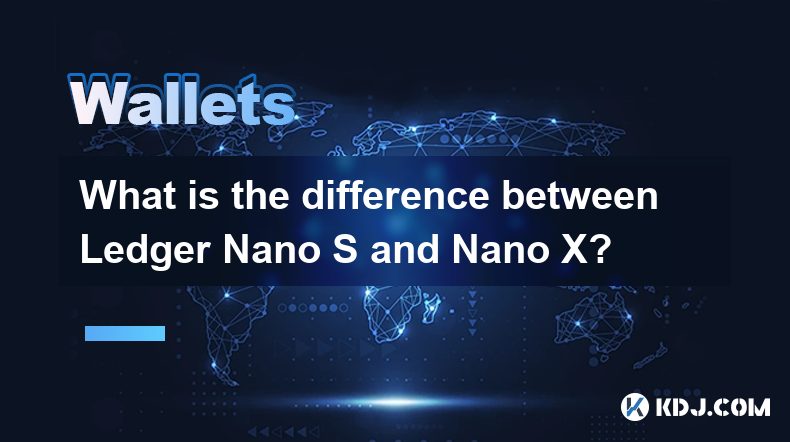
What is the difference between Ledger Nano S and Nano X?
Apr 09,2025 at 12:49am
When it comes to securing your cryptocurrencies, hardware wallets are often recommended as the safest option. Among the most popular hardware wallets are the Ledger Nano S and Ledger Nano X. Both devices are produced by Ledger, a well-known company in the cryptocurrency security industry. This article will delve into the differences between these two de...

How do I enable the Shield Transaction feature on Trezor?
Apr 08,2025 at 10:28pm
Enabling the Shield Transaction feature on Trezor involves a series of steps that allow you to enhance the privacy of your cryptocurrency transactions. This feature is particularly useful for users who want to protect their transaction history from being easily traced on the blockchain. In this article, we will guide you through the process of enabling ...

Does the Ledger wallet support offline signing?
Apr 09,2025 at 04:49am
Introduction to Ledger Wallet and Offline SigningThe Ledger wallet is a popular hardware wallet used by cryptocurrency enthusiasts to securely store their digital assets. One of the key features that users often inquire about is offline signing. Offline signing, also known as cold signing, is a security measure that allows users to sign transactions wit...

How do I send Ethereum to my Ledger wallet?
Apr 09,2025 at 03:21am
Sending Ethereum to your Ledger wallet involves a few straightforward steps, but it's crucial to follow them carefully to ensure the security of your funds. In this guide, we'll walk you through the process of transferring Ethereum to your Ledger wallet, ensuring that you understand each step and the necessary precautions. Preparing Your Ledger WalletBe...

How do I set a PIN code for my Ledger Nano X?
Apr 08,2025 at 11:14pm
Setting a PIN code for your Ledger Nano X is a crucial step in securing your cryptocurrency assets. The PIN code acts as a primary layer of security, ensuring that only you can access your device. In this article, we will guide you through the process of setting up a PIN code on your Ledger Nano X, ensuring that you follow each step meticulously to main...

Where are my Ledger wallet private keys stored?
Apr 08,2025 at 10:35pm
When using a Ledger hardware wallet, one of the most critical aspects to understand is the storage and management of your private keys. This article will delve into the specifics of where your Ledger wallet private keys are stored, ensuring you have a comprehensive understanding of their security and accessibility. Understanding Private Keys in Ledger W...

What is the difference between Ledger Nano S and Nano X?
Apr 09,2025 at 12:49am
When it comes to securing your cryptocurrencies, hardware wallets are often recommended as the safest option. Among the most popular hardware wallets are the Ledger Nano S and Ledger Nano X. Both devices are produced by Ledger, a well-known company in the cryptocurrency security industry. This article will delve into the differences between these two de...

How do I enable the Shield Transaction feature on Trezor?
Apr 08,2025 at 10:28pm
Enabling the Shield Transaction feature on Trezor involves a series of steps that allow you to enhance the privacy of your cryptocurrency transactions. This feature is particularly useful for users who want to protect their transaction history from being easily traced on the blockchain. In this article, we will guide you through the process of enabling ...
See all articles






















































































